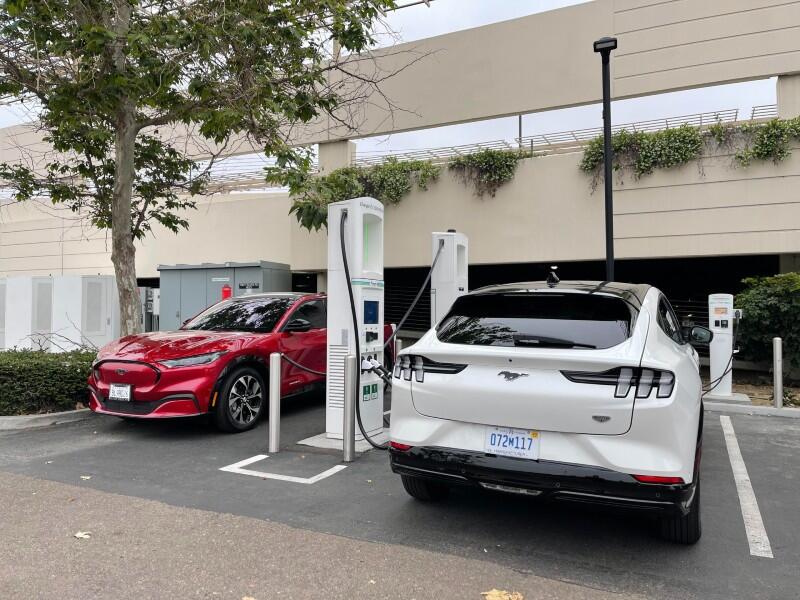Green Infrastructure Development- Building a Sustainable Future
In today's rapidly changing world, the need for sustainable development has become more crucial than ever. Green infrastructure development is a concept that focuses on creating environmentally friendly and sustainable solutions to meet the needs of growing urban populations.
What is green Infrastructure?
Green infrastructure refers to a network of natural and semi-natural elements, such as parks, forests, wetlands, green roofs, permeable pavements, and urban gardens, that are strategically designed and implemented within an urban landscape to provide multiple environmental, social, and economic benefits. It aims to mimic nature's functions by utilizing natural processes to manage stormwater, improve air quality, enhance biodiversity, reduce the urban heat island effect, and create recreational spaces for communities.
The Importance of Green Infrastructure
The increasing urbanization and impacts of climate change pose significant challenges to cities worldwide. Green infrastructure plays a vital role in addressing these challenges by providing sustainable solutions. It helps mitigate the effects of urbanization, such as excessive stormwater runoff, heat islands, and air pollution, while improving the overall quality of life for urban residents. Green infrastructure also contributes to climate change adaptation and resilience by enhancing a city's capacity to withstand and recover from natural disasters.
Components of Green Infrastructure
Green infrastructure encompasses various components that work together to create a resilient and sustainable urban environment. These components include:
Parks and Open Spaces
Parks and open spaces are essential elements of green infrastructure, providing recreational areas, promoting physical and mental well-being, and supporting biodiversity.
Urban Forests and Trees
Urban forests and trees contribute to air purification, reduce the heat island effect, sequester carbon, and provide shade and aesthetic value to urban areas.
Rain Gardens and Bioswales
Rain gardens and bioswales are vegetated areas designed to capture and filter stormwater runoff, reducing the strain on traditional drainage systems and improving water quality.
Green Roofs and Walls
Green roofs and walls involve the use of vegetation on building surfaces to regulate temperature, reduce energy consumption, improve air quality, and provide habitat for wildlife.
Permeable Pavements
Permeable pavements allow rainwater to infiltrate the ground, preventing runoff and replenishing groundwater supplies while also reducing flooding and pollution.
Urban Agriculture
Urban agriculture promotes local food production, improves food security, and fosters community engagement while utilizing underutilized spaces within cities.
Green Infrastructure vs. Gray Infrastructure
Green infrastructure differs from traditional gray infrastructure, which primarily comprises concrete and steel structures. While gray infrastructure focuses on centralized systems, green infrastructure takes a decentralized and nature-based approach. Gray infrastructure typically addresses single issues, whereas green infrastructure offers multiple benefits and a holistic approach to urban development.
Benefits of Green Infrastructure
Green infrastructure offers a wide range of benefits that positively impact both the environment and society. Some key benefits include:
Stormwater Management: Green infrastructure reduces stormwater runoff, alleviating pressure on conventional drainage systems and mitigating the risk of flooding.
Improved Air and Water Quality: Vegetation in green infrastructure helps filter pollutants, improving air quality and water purification.
Enhanced Biodiversity: Green spaces provide habitats for wildlife, promote biodiversity, and support ecological balance within urban areas.
Heat Island Mitigation: Vegetation and green spaces help reduce the urban heat island effect, lowering temperatures and improving urban comfort.
Health and Well-Being: Access to green spaces enhances mental and physical well-being, encourages physical activity, and reduces stress levels.
Energy Efficiency: Green infrastructure, such as green roofs, reduces energy consumption by providing insulation and reducing the need for air conditioning.
Implementing Green Infrastructure Projects
Successful implementation of green infrastructure projects requires careful planning and collaboration between various stakeholders, including city planners, architects, engineers, policymakers, and community members. The following steps are essential for effective implementation:
Assessment and Planning: Conduct a comprehensive assessment of the city's needs, analyze existing infrastructure, and identify suitable locations for green infrastructure projects.
Design and Integration: Develop design plans that incorporate green infrastructure components into the urban fabric, ensuring they align with existing infrastructure and serve multiple purposes.
Community Engagement: Involve local communities in the decision-making process, seek their input, and promote awareness and understanding of the benefits of green infrastructure.
Policy and Regulations: Establish supportive policies and regulations that encourage the integration of green infrastructure into urban planning and development processes.
Monitoring and Maintenance: Regularly monitor the performance of green infrastructure projects, maintain their functionality, and adapt them to changing conditions.
Case Studies: Successful Green Infrastructure Initiatives
Several cities around the world have successfully implemented green infrastructure projects. One notable example is the High Line in New York City, a repurposed elevated railway transformed into a linear park and greenway. The High Line not only provides a unique recreational space but also enhances biodiversity and promotes economic development in the surrounding area.
Another example is the Benthem Square Water Square in Rotterdam, Netherlands. This innovative project utilizes an underground water storage system and a plaza that collects and stores rainwater during heavy rainfall, preventing flooding while creating a vibrant public space.
Challenges and Solutions in Green Infrastructure Development
While green infrastructure offers numerous benefits, its development can face challenges such as limited funding, a lack of awareness, and conflicting interests. However, there are several solutions to overcome these challenges:
Public-Private Partnerships: Collaboration between public and private entities can leverage resources, expertise, and funding for green infrastructure projects.
Education and Awareness: Increasing public awareness about the benefits of green infrastructure can garner support and encourage investment.
Incentives and Regulations: Governments can provide incentives such as tax breaks or regulatory frameworks that promote the integration of green infrastructure into urban development.
Multi-functional Design: Designing green infrastructure projects to serve multiple purposes, such as combining stormwater management with recreational spaces, can attract support from diverse stakeholders.
Funding and Financing for Green Infrastructure
Securing funding for green infrastructure projects can be challenging. However, various financing options are available:
Public Funding: Government agencies at different levels can allocate budgets for green infrastructure projects, recognizing their long-term benefits.
Private Investment: Attracting private investment through public-private partnerships or green bonds can provide additional funding sources.
Grants and Incentives: Municipalities and organizations often provide grants and incentives for green infrastructure projects, supporting their implementation.
Policy and Regulations for Green Infrastructure
Effective policies and regulations play a crucial role in promoting the development and integration of green infrastructure. Governments can implement the following measures:
Incorporating Green Infrastructure into Urban Plans: Governments can mandate the inclusion of green infrastructure components in urban planning and development guidelines.
Setting Performance Standards: Establishing standards and guidelines for green infrastructure design, construction, and maintenance ensures quality and consistency across projects.
Incentivizing Green Infrastructure: Offering tax incentives, grants, or expedited permitting processes can encourage developers and property owners to incorporate green infrastructure into their projects.
Integrating Green Infrastructure in Building Codes: Revising building codes to include provisions for green infrastructure, such as green roofs or permeable pavements, ensures their consideration in new construction or renovations.
Collaboration and Partnerships: Governments can foster collaborations with various stakeholders, including NGOs, research institutions, and private sector entities, to promote knowledge sharing, innovation, and the effective implementation of green infrastructure projects.
Green Infrastructure and Climate Change Resilience
Green infrastructure plays a vital role in enhancing a city's resilience to climate change impacts. By reducing the vulnerability of urban areas to extreme weather events, such as floods or heatwaves, green infrastructure helps communities adapt to changing climate conditions. It provides natural cooling mechanisms, manages stormwater, and protects against coastal erosion, thus minimizing the risks associated with climate-related disasters.
Green Infrastructure in Urban Planning
Integrating green infrastructure into urban planning is essential for creating sustainable and livable cities. Urban planners can prioritize the preservation of green spaces, incorporate green infrastructure components into new developments, and retrofit existing infrastructure to make it more sustainable. By embracing green infrastructure, cities can enhance their environmental performance, improve quality of life, and foster a sense of community.
Public Engagement and Community Participation
Public engagement and community participation are critical for successful green infrastructure projects. Engaging with local communities, listening to their needs and concerns, and involving them in the decision-making process can build support and ensure the projects meet the community's requirements. Public education campaigns, workshops, and open forums can facilitate dialogue, increase awareness, and foster a sense of ownership among residents.
Green Infrastructure and Biodiversity Conservation
Green infrastructure provides valuable habitats for wildlife, contributing to biodiversity conservation in urban areas. By creating interconnected green spaces, cities can support the movement of species, maintain ecological balance, and protect native flora and fauna. Incorporating native plant species, creating wildlife corridors, and preserving natural habitats within urban landscapes are effective strategies for promoting biodiversity in cities.
Green infrastructure development offers a sustainable approach to urban planning and development. By integrating natural and semi-natural elements into the urban fabric, cities can achieve multiple environmental, social, and economic benefits. From stormwater management to enhanced biodiversity, green infrastructure provides solutions to pressing urban challenges while improving the well-being of urban residents. Embracing green infrastructure is essential for building a sustainable future and creating cities that thrive in the face of environmental change.









 English (US) ·
English (US) ·